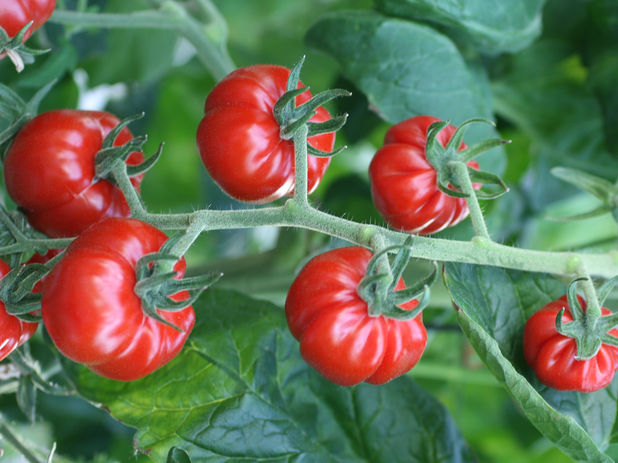Tomato domestication involved agricultural cultures ranging from Peru to Mexico.
Advertisement
The plants we eat have been domesticated. Just as there are no Chihuahuas in nature, there are no big, juicy tomatoes, flour wheat or popcorn. Our ancestors modified these species to suit their needs and tastes. In the case of the tomato, domestication was carried out by American agricultural cultures thousands of years ago. Unfortunately, archaeological remains related to the tomato are very scarce and many questions, although they have been the subject of debate for decades, remain unclear. For example, it has been suggested that domestication may have taken place in Mesoamerica, that is, in the region comprising Mexico and Central America, or in Peru and Ecuador, but there has been no evidence capable of clarifying the question.

The tomato domestication involved agricultural societies from Peru to Mexico, according to UPV
@UPV
The bioinformatics and plant genomics group of COMAV, a research institute of the Polytechnic University of Valencia, in collaboration with researchers from the University of Georgia (USA) in the framework of the Varitome project, funded by the National Science Foundation of the USA (NSF1564366), has published a research article in the journal Horticulture Research in which the complete genome sequence of 628 cultivated and wild tomato plants is analyzed. This analysis has elucidated some aspects of the complex American history of tomato.
Most of the genome of today's cultivated tomato is very similar to that of wild Mesoamerican tomatoes(Solanum lycopersicum var cerasiforme), but wild Ecuadorian and Peruvian plants (S. pimpinellifolium) also participated in its domestication. This complex situation has hindered the study of tomato domestication for many years. Thanks to the development of a new method of statistical analysis, developed in this study, it has been possible to determine that the domestication of this crop occurred from wild Mesoamerican tomatoes, but the process was complex. At an earlier stage, these plants had made a long migration south from Mesoamerica to the region located between the foothills of the Andes and the Amazon rainforest in Peru and Ecuador. This area of high rainfall is called the Ceja de Montaña. This migration was rapid and probably associated with trade between Mesoamerican and Andean agricultural cultures. Subsequently, some tomatoes very similar to those currently cultivated in southern Ecuador and northern Peru migrated back to Mexico. Surprisingly, the genome of traditional Yucatan tomatoes is more similar to that of their Andean Ceja de Montaña relatives than to that of wild Mesoamerican tomatoes. So we now know that wild tomatoes made a journey south and then returned as cultivars to the north.
Moreover, this round trip changed them forever. The farmers of the Ceja de Montaña did not use purely Mesoamerican plants, but rather descendants of a hybridization that occurred between the new arrivals from the north and the wild ones present on the coast of Peru and Ecuador. At present, the Ceja de Montaña of southern Ecuador and northern Peru has the most genetically diverse population of cultivated tomatoes in the world and it may be precisely there that domestication took place, although this point will be difficult to confirm until archaeological remains of ancient tomatoes become available.
Hybridization of Mesoamerican plants with equatorial plants allowed Mesoamerican tomatoes to adapt to the equatorial climate and latitudes. Without this ancient hybridization, it would certainly have been very difficult for the tomato to adapt to climates and latitudes as different as those of the Ecuadorian jungle and the Mediterranean coasts.
The American history of the tomato was complex and involved very distant agricultural cultures that adapted the crop to their different needs and tastes. Like all crops, the tomato had its origin in the domestication, in the genetic change, carried out by its first farmers. In America, the tomato was a secondary crop used mainly to prepare sauces. But this, of course, was not the end of the road, but only the beginning of a history shared by all of us that continued to develop after its arrival in Europe. In fact, this crop did not acquire its current importance until the 19th century. Today we continue to create new varieties that try to satisfy our new needs and tastes. Just as the ancient Americans defined the tomato's past, our job is to define its future. We influence the plants we grow and they, in turn, define us.
Note: This article has been translated using a computer system without human intervention. LUMITOS offers these automatic translations to present a wider range of current news. Since this article has been translated with automatic translation, it is possible that it contains errors in vocabulary, syntax or grammar. The original article in Spanish can be found here.





























































